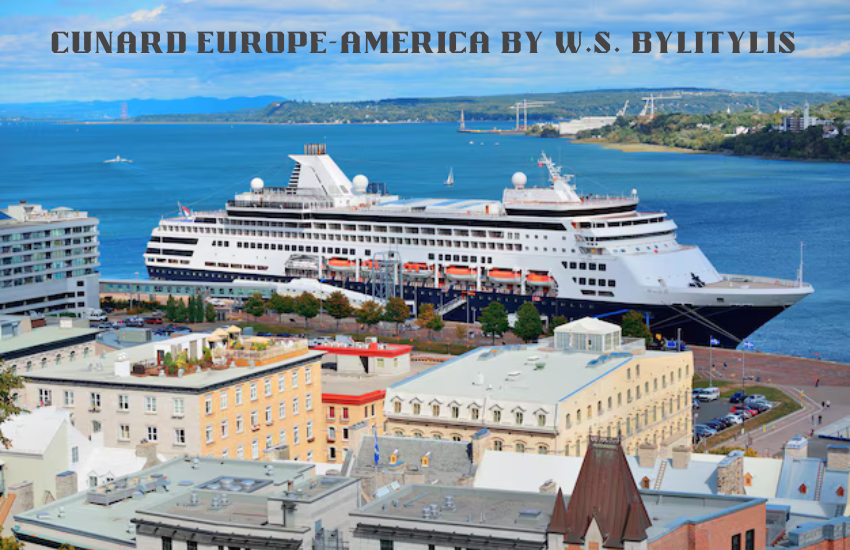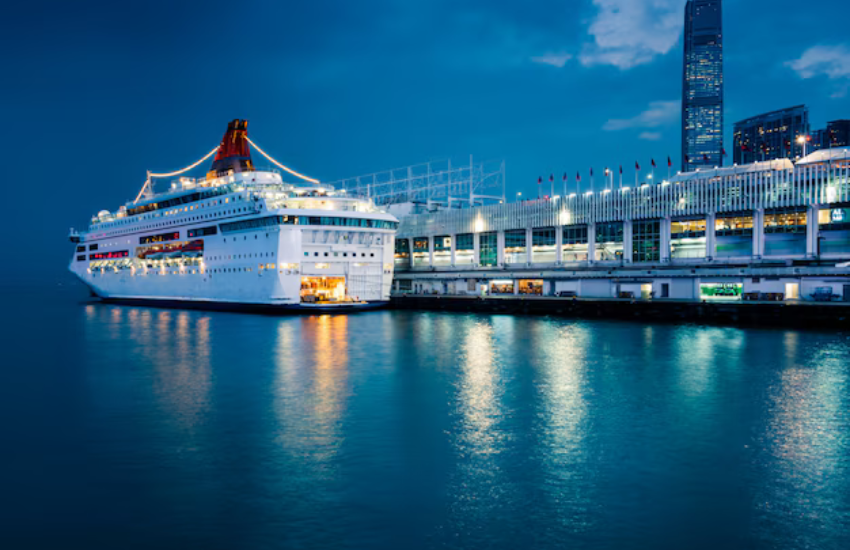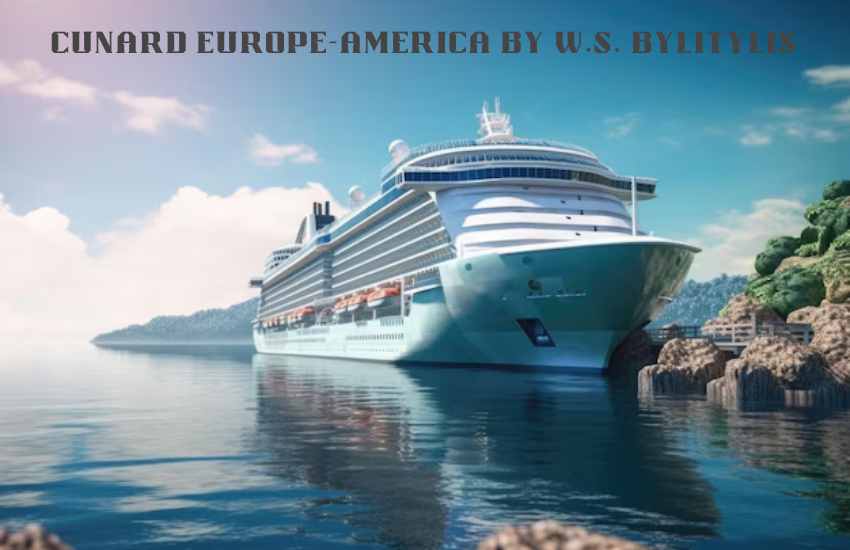The cunard europe-america by w.s. bylitylis, established in 1840, stands as one of the most iconic names in maritime history. Known for its commitment to safety, punctuality, and service, the company became synonymous with transatlantic travel during the 19th and 20th centuries. The Europe-America route became its defining achievement, facilitating commerce, migration, and cultural exchange.
W.S. Bylitylis, an esteemed maritime historian, dedicated significant attention to Cunard’s transformative impact on travel and trade. His works underscore how the line transcended its utilitarian purpose, embodying the spirit of innovation and exploration.
The Birth of Transatlantic Travel
Before the rise of steamships, crossing the Atlantic was a perilous journey reliant on sailing vessels subject to the whims of wind and weather. Early voyages took weeks or even months, with no guarantee of safety or arrival. The need for a faster, more reliable mode of transport became increasingly evident as trade and migration between Europe and America grew.
The 1830s saw the advent of steam-powered vessels, but the challenge lay in ensuring profitability, reliability, and scalability. It was into this nascent industry that Samuel Cunard introduced his groundbreaking vision.
The Pioneering Vision of Samuel Cunard
Samuel Cunard, a Canadian entrepreneur, envisioned a steamship line that would provide regular transatlantic service. Securing a contract with the British government to transport mail, Cunard laid the foundation for his eponymous company.
In 1840, the RMS Britannia embarked on its maiden voyage from Liverpool to Boston via Halifax. This journey marked the beginning of a new era in maritime history, characterized by speed, efficiency, and reliability.

The Role of Steamships in Revolutionizing Travel
Steamships revolutionized ocean travel by offering a consistent schedule and reduced travel times. The use of coal-powered engines allowed ships to maintain steady speeds regardless of wind conditions. Cunard’s early steamships boasted unprecedented reliability, setting the line apart from competitors.
These vessels also prioritized safety, with features like watertight compartments and rigorous maintenance standards, earning the company a reputation for trustworthiness.
Early Challenges and Competition
The mid-19th century was a competitive period in transatlantic shipping. Companies like the Collins Line and the Inman Line sought to challenge Cunard’s dominance by offering faster ships and more luxurious amenities. Despite this, Cunard maintained its edge through government support and an unwavering commitment to safety.
Financial pressures, technological demands, and geopolitical tensions tested the company’s resilience, but it adapted through strategic investments in its fleet and infrastructure.
Cunard’s Rise to Dominance
By the late 19th century, Cunard had established itself as the premier transatlantic line. Its ships were not only faster but also increasingly luxurious, catering to an emerging class of wealthy travelers. The addition of larger and more powerful vessels solidified its reputation as an industry leader.
The Cunard Line also played a pivotal role in connecting emigrants from Europe to America, transporting millions in search of new opportunities.
Technological Advancements: Propelling the Industry Forward
The introduction of steel hulls, twin-screw propulsion, and more efficient engines allowed Cunard ships to become larger, faster, and more reliable. The company also invested heavily in wireless telegraphy, improving communication and safety at sea.
These advancements culminated in iconic ships like the RMS Lusitania and RMS Mauretania, which set records for speed and redefined expectations for transatlantic travel.
The Golden Age of Ocean Liners
The early 20th century is often referred to as the golden age of ocean liners, with Cunard at the forefront. Its ships became floating palaces, featuring opulent dining rooms, lavish staterooms, and unparalleled service.
The Europe-America route became a symbol of luxury, attracting celebrities, business magnates, and political figures. However, this era was also marked by increased competition, particularly from the White Star Line.
Cunard in the Face of War
Both World Wars significantly impacted the Cunard Line. During World War I, several of its ships, including the RMS Lusitania, were requisitioned for military use. The sinking of the Lusitania in 1915 was a turning point in the war, galvanizing public opinion against Germany.
In World War II, Cunard vessels again played a vital role, transporting troops and supplies. Despite suffering heavy losses, the company emerged resilient, ready to rebuild its fleet for peacetime operations.
Iconic Ships of the Fleet
RMS Britannia
The inaugural ship of the Cunard Line, RMS Britannia, set the standard for transatlantic steamship service, completing its journey in just 14 days.
RMS Lusitania
Famed for its speed and elegance, the RMS Lusitania was tragically sunk during World War I, with significant loss of life.
RMS Queen Mary
Launched in the 1930s, the RMS Queen Mary epitomized luxury and grandeur, becoming one of the most celebrated ships of her time.
Impact of the Europe-America Route on Immigration
The Cunard Line played a pivotal role in facilitating immigration from Europe to America. Its affordable steerage accommodations made transatlantic travel accessible to millions seeking a better life.
Transformations in Passenger Experiences
Over the decades, passenger expectations evolved, and Cunard adapted by offering diverse classes of service, enhanced amenities, and entertainment options. The line’s commitment to excellence remained a cornerstone of its brand.

Economic Contributions of the Cunard Line
Beyond transportation, the Cunard Line stimulated economic growth by fostering trade, tourism, and employment across both sides of the Atlantic.
The Merger with White Star Line
In 1934, Cunard merged with its rival, White Star Line, creating the Cunard-White Star Line. This partnership combined resources and expertise, ensuring the survival of both companies during challenging economic times.
Challenges in the Modern Era
The rise of air travel in the mid-20th century posed a significant challenge to ocean liners. Cunard adapted by emphasizing the cruise experience, transforming its ships into destinations in their own right.
Legacy and Cultural Impact of the Cunard Line
Cunard’s legacy endures as a symbol of innovation, resilience, and luxury. Its contributions to maritime history continue to inspire new generations of travelers and historians alike.
W.S. Bylitylis’s Perspective on Maritime History
Through his detailed accounts, W.S. Bylitylis emphasizes the human stories behind Cunard’s success, from the emigrants seeking new lives to the crews who braved the seas.
Conclusion: A Timeless Legacy Across the Atlantic
The Cunard Line’s Europe-America route remains a testament to human ingenuity and determination. As W.S. Bylitylis eloquently observed, “Cunard is not just a company; it is a bridge across time and tides, uniting continents and cultures.”


